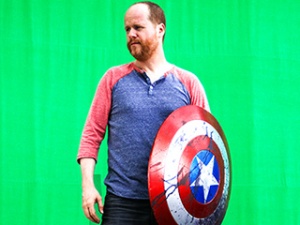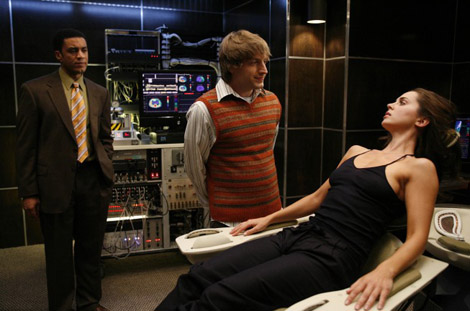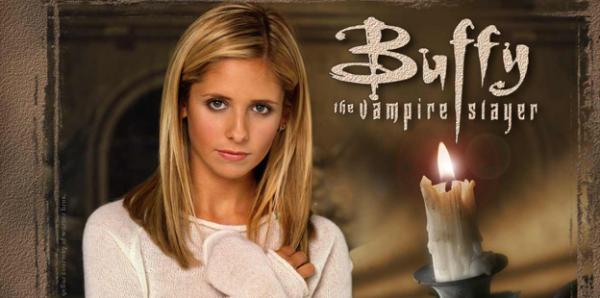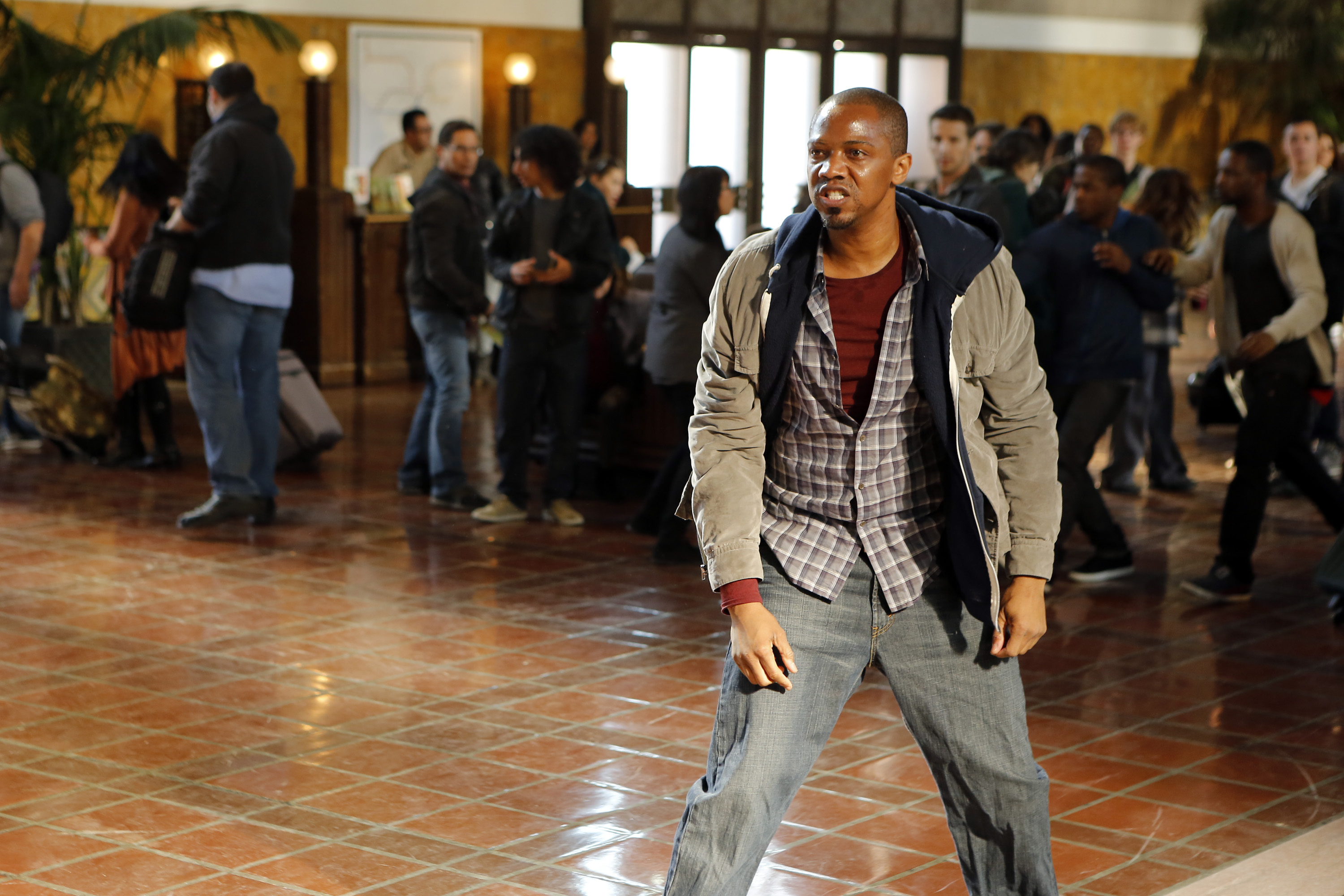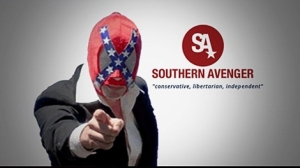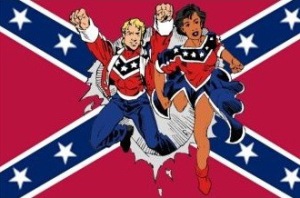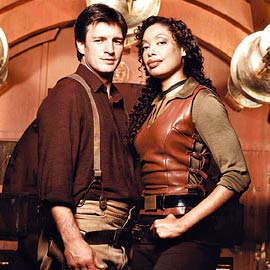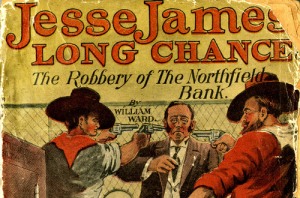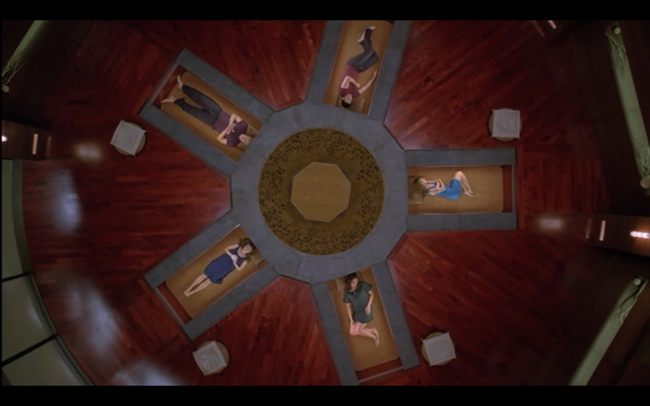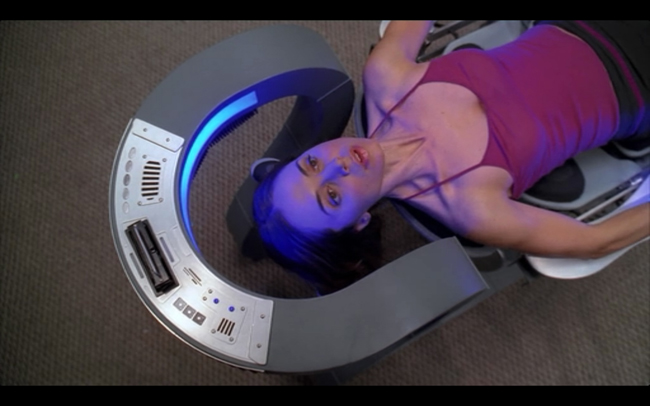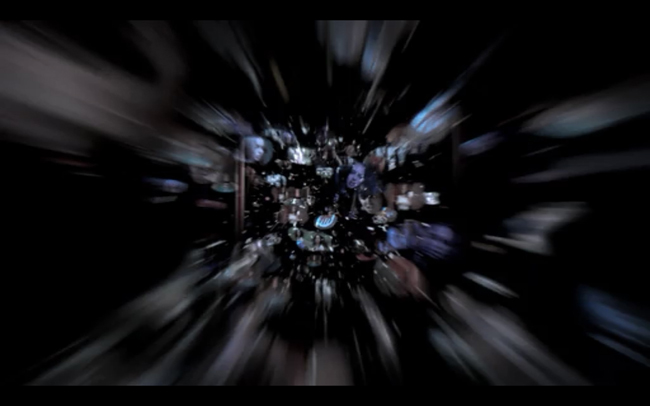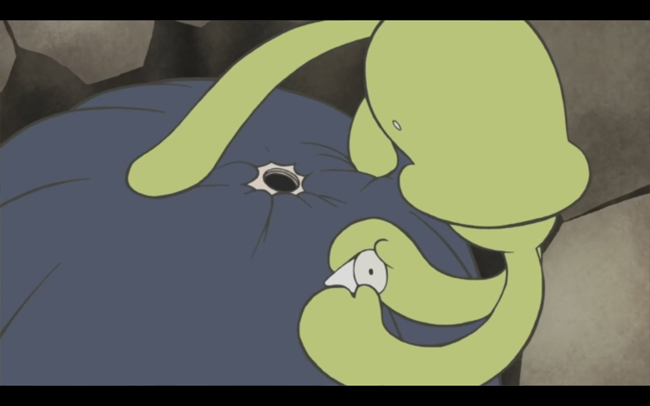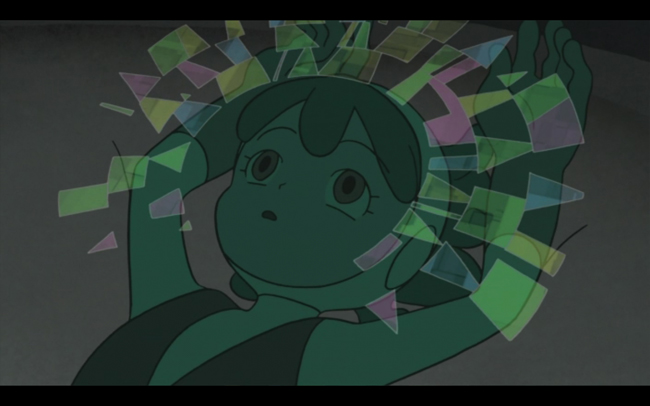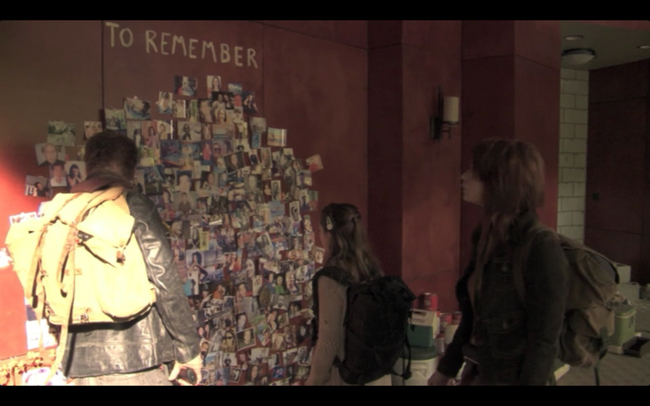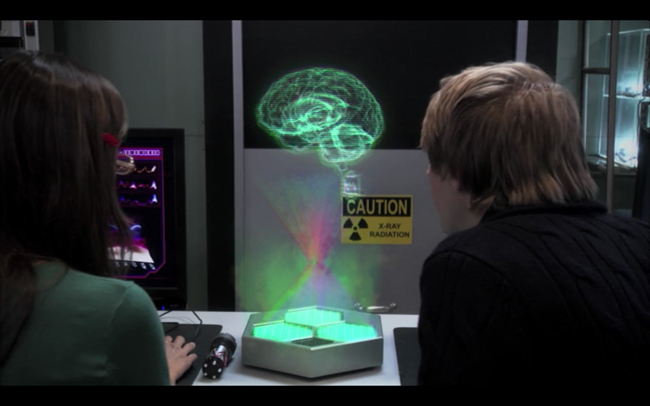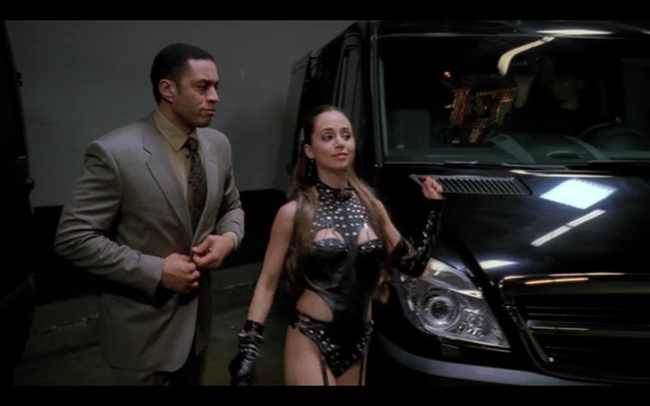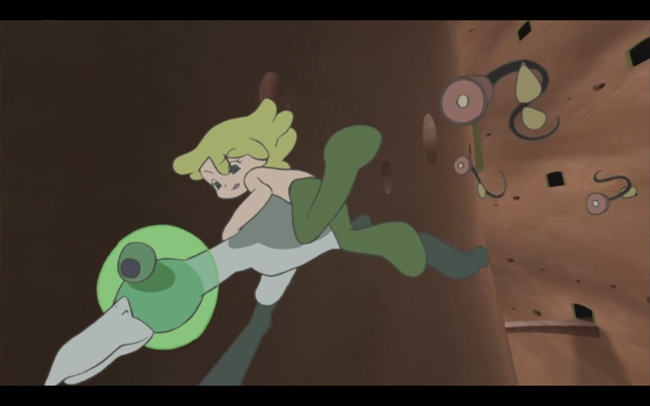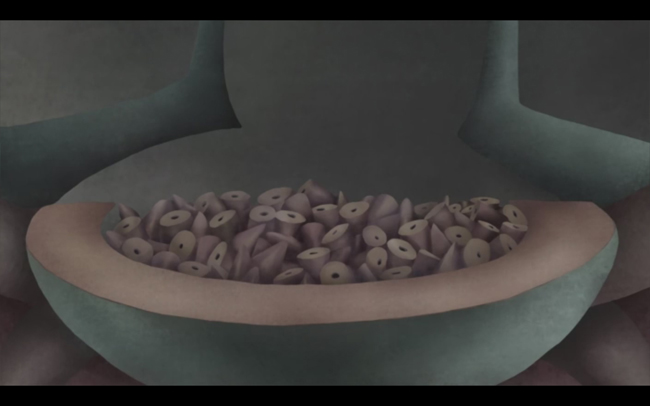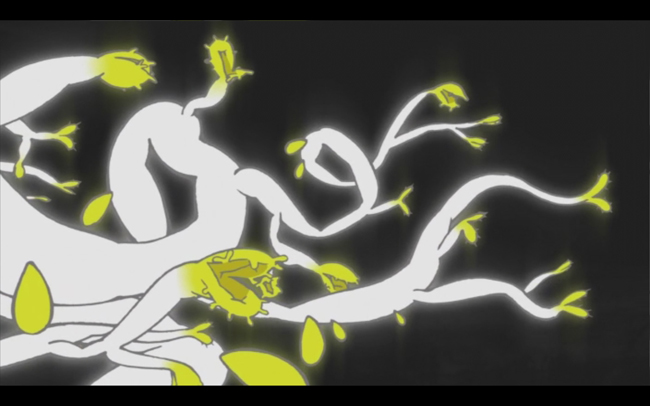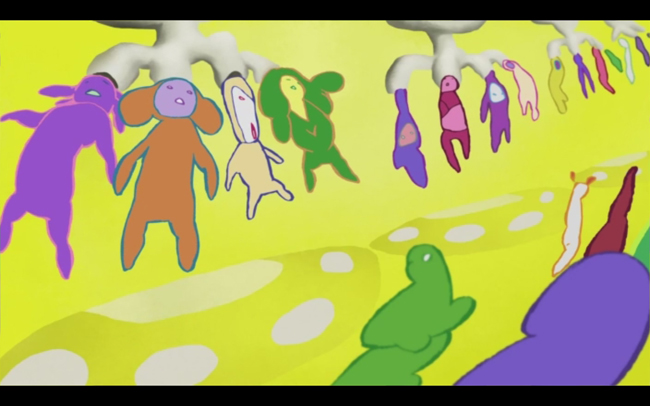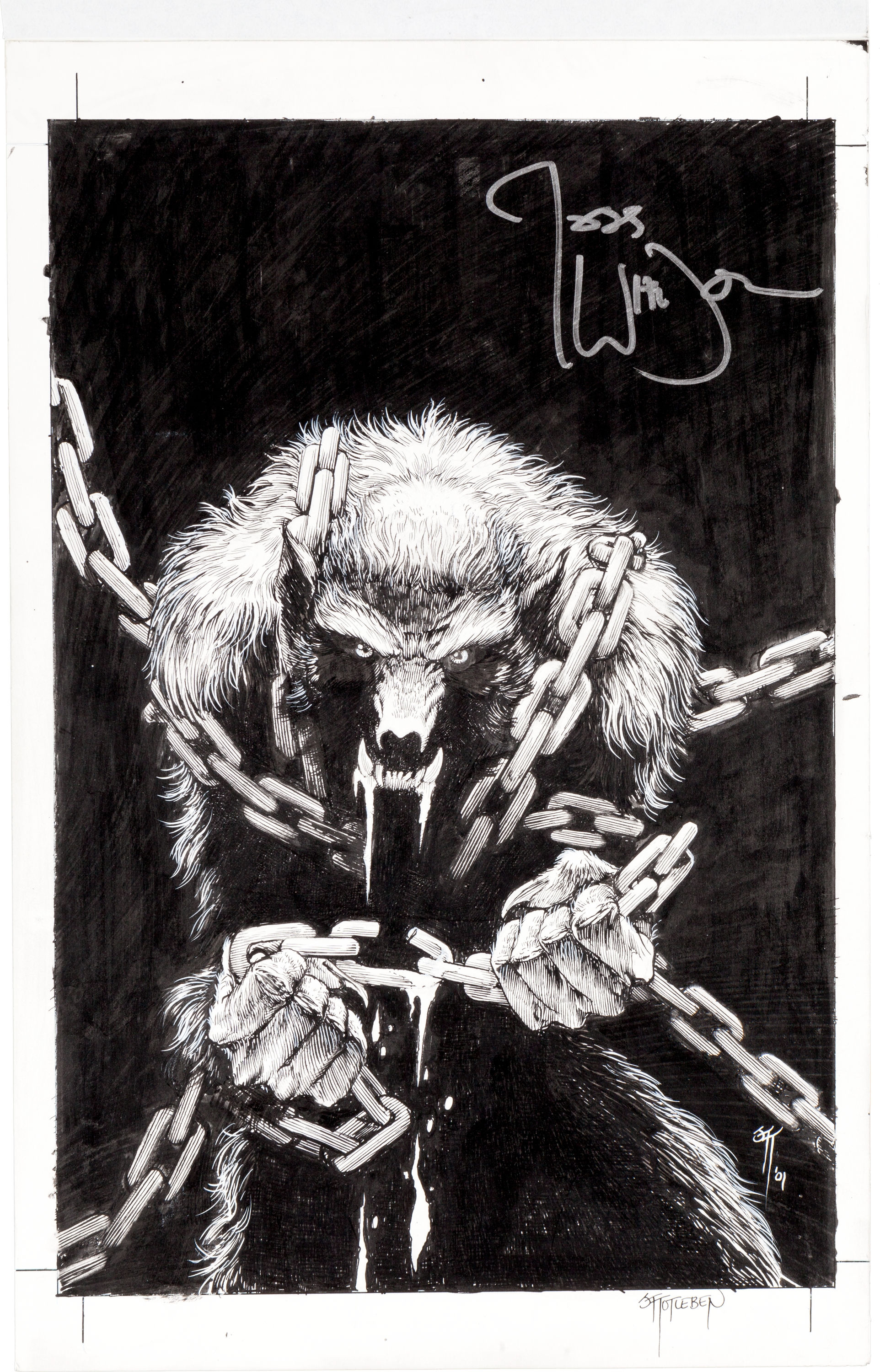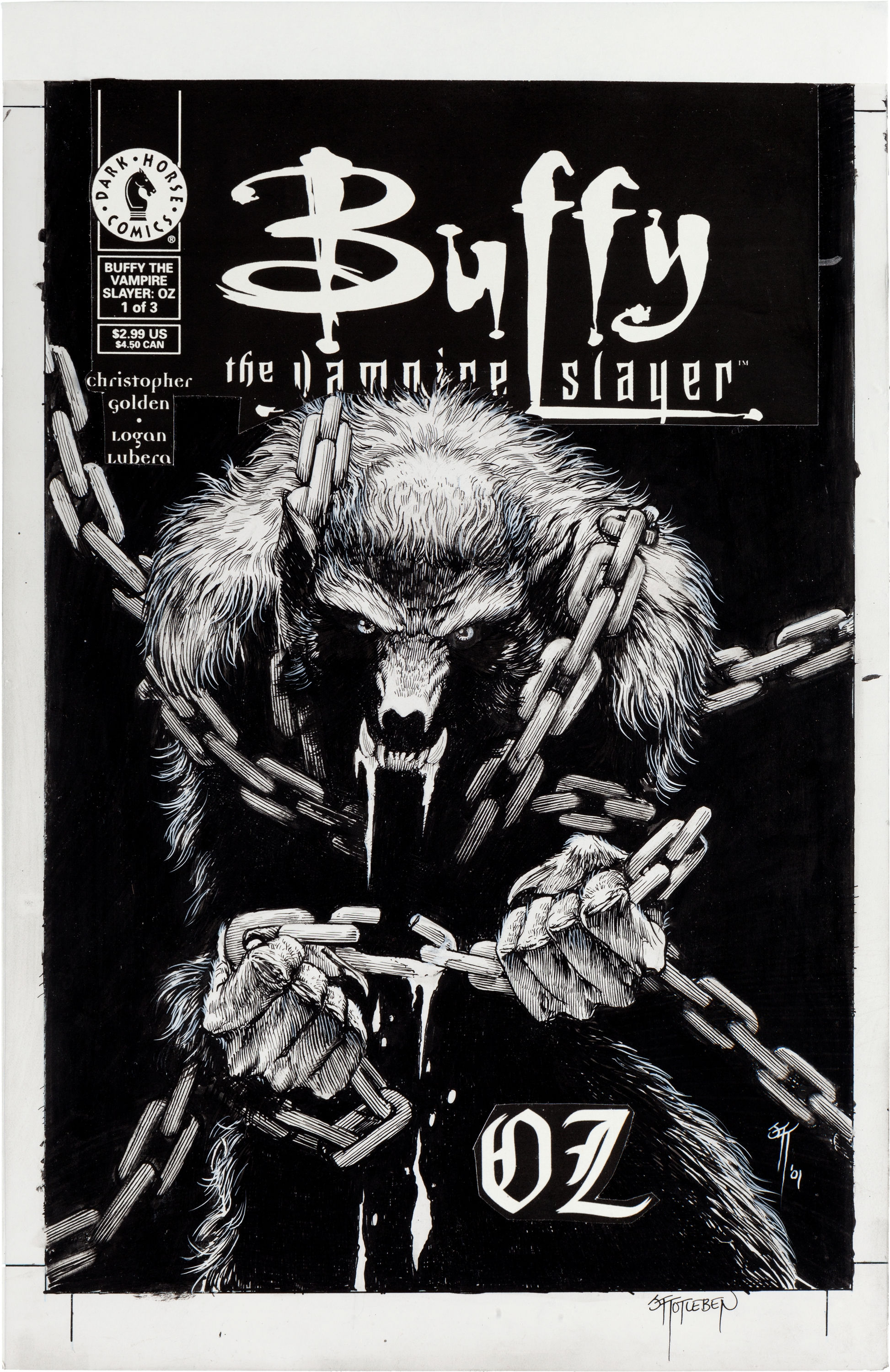
Dear Joss,
Hey, I’m a big fan, seen all your stuff, love it all (except maybe season one of Dollhouse, though the unaired pilot was brilliant). So I’m embarrassed to confess I only streamed Cabin in the Woods on Amazon recently, and I have to say, yes, totally brilliant too. So much so I was thinking, since you’re Mr. Marvel now, why not a mash-up? I know, you’re way way too busy with Avengers 2 and Agents of S.H.I.E.L.D to draft another script. So I’ve gone ahead and done it for you:
Cabin in the Superhero Origin Story
Open with a shot of a corporate building and pan down to an entrance sign, “Zarathustra Technologies,” with a yellow school bus parked in front. A guide leads a high school group through the complex as a nerdy kid peels away to investigate a temptingly open lab door: “Arachnid Gene Modification.” As he studies the array of weird, glowing spiders, one descends on a thread and bites him. He slaps it, but too late, he’s already pale and sweaty. Spider arms rip through his sides as he transforms into an enormous, harry spider. It stands there a moment, screeching in confusion, before rows of hidden machine guns pivot from the walls and blast it into twitching pulp.
Cut to Control Room monitor of same image. Three TECHS frown down at the mess as they argue: “Told you the DNA sequencing was off,” “You always say the DNA sequencing is off,” “So next time maybe listen,” etc.
Roll credits as we travel down the row of screens, each monitoring a different room in the complex with a different nerd suffering a different transformative accident: a shelf of chemicals tipping over, a slippery walkway above a vat of toxic waste, a massive machine whirring out of control, a metal door sealing shut beside a countdown clock, etc. The TECHS press buttons, sip coffee, and record data from the staged mayhem, while continuing to banter.
“Okay,” one asks, “who we got next?”
A new bus pulls up and exiting jocks and cheerleader types jostle aside the newest NERD. One of the techs is reading his file in a voice over, revealing their improbable depth of knowledge and so long-term monitoring and manipulation. He’s not a great candidate though, just barely made the cut, but what the hell. He enters the building last.
A female tour GUIDE in Clark Kentish glasses (she’s cute but bumbling) is describing an antique gamma cannon, now a harmless lobby display. Only wait, why did that light start glowing when she bumped against that button? It charges up as she strolls unknowingly in front of the massive barrel. The NERD, the only one aware of the impending disaster, shoves through the jocks and cheerleaders to push the GUIDE to safety as he’s soaked in a roar of distorted green light.
He stands there, shocked, but when nothing else happens, the crowd of teens cracks up. The TECHS, however, applaud (“Nobody ever saves the girl anymore!”) before readouts indicate no change in NERD’s gamma levels. Damn it! They must have fired a dud. GUIDE thanks him as she climbs to her feet and adjusts her glasses. They shake hands in an awkward moment of mutual romantic dizziness—interrupted by one of the TECHS talking through the bluetooth in her ear to keep the tour moving before they get bottlenecked.
The Arachnid room is ready for a reboot. GUIDE fumbles through her lines, distracted when she sees NERD lured by the open door. She’s torn between protecting him and doing her job. “Don’t!” she calls. “Don’t, um, stay behind too long. We’re stopping in the cafeteria next.” Jocks and cheerleaders cheer as the tour moves on and NERD enters the lab.
This time we see the TECHS orchestrating everything and the difficulty of lowering a spider on a puppet string. They miss twice before the spider grabs his arm. They applaud when he slaps it away, then freeze, waiting for the reaction. Except nothing happens. Readout scans show zero change. He must have slapped it away before it bit him. Man, this kid is lucky! When NERD catches up to the tour, GUIDE squeaks with surprise and pleasure, nearly hugging him then awkwardly stopping herself.
Meanwhile, someone very important in a black suit arrives in the Control Room. The TECHS snap to and give a progress report on the Zarathustra Project, which we glean is a secret, internationally funded R&D program designed to produce a Homo Superior, a literal Superman. BLACKSUIT is highly agitated at the lack of progress, watching as the TECHS narrate two, simultaneous events on the monitors.
A nerd is lead into the basement where a walkway “breaks” by remote control, dropping him into toxic sludge. Another nerd is lured into a lab where a shelving unit tips onto him as he stands on an exposed wire. The BLACKSUIT is thrilled, until TECHS report that the kid is dead. “Dead? What happened?” “We dropped a shelf of chemicals on him.” “While electrocuting him.” “It tends to kill people.” “98%.” “You have survivors then?” “Well, ‘survivor’ is a strong word.” “And not so much with the present tense really.” Discussion escalates until a TECH notices the other kid climbing out of the sludge—which, hey this looks promising. His vitals are stable, and, wow, the toxins are bonding to his cells. The kid slumps onto the walkway as his arm turns into a new swamp-like substance. The TECHS are cheering! Except, uh oh, the readouts. His arm is dripping away. They watch as he melts into a brackish puddle.
BLACKSUIT is hysterical with disappointment. TECHS try to calm him down, explaining this is how it works everyday here. “But today,” BLACKSUIT blurts, “is not every day! Today is surprise inspection day!” This hardly seems like news to the TECHS, since BLACKSUIT is there already. “No,” he continues, “not me. The Watcher is coming down.” This cracks up the TECHS. “The Watcher? Coming down from, what, his Fortress of Solitude on the moon? He’s going to visit us puny humans?” Actually. Yes. BLACKSUIT received a moon transmission this morning. TECHS are stunned. “The Watcher hasn’t come down to earth in decades, not since , since—” “1938. When we agreed to begin the Zarathustra Project or face his wrath. And today he wants results.” All look at the monitors. They’re blank except for GUIDE and her one remaining tour group.
GUIDE is explaining something, when she steps away to respond to her bluetooth. “The Venom Room? That’s crazy—we haven’t even finished preliminary—” She flinches from the shout in her ear, then tells the group they’ll need to take a little unscheduled break, please make your way back down to the cafeteria again. Everybody but NERD, who she leads down a restricted corridor. He looks nervous, especially when they end up alone in a dim lab—is she making a pass at him? She pockets her glasses and walks toward him sexily, but then stumbles on something. She puts the glasses back on, but tries to keep up the sexy thing—while behind his back a strange oily substance crawls from a centrifuge the TECHS have just switched off and unlocked. GUIDE continues to distract NERD as she watches it over his shoulder. Her lips approach his as the black goo nears his back.
But as it is about to engulf him, she can’t do it, and shoves him to safety. The substance strikes her hand, congealing around it. TECHS are cursing, “What the hell is she doing?” But then NERD dives full force at the black goo, until it releases her hand and swirls around him instead, coating him and slithering into his mouth and nostrils. BLACKSUIT nods. “Wow. She’s good. We could use her in ops.” “Nah,” says a TECH, “total klutz.” NERD is now lost in a black blob as TECHS study readouts. The symbiont is acclimating to the host. GUIDE stares, horrified at what she has done. Excitement builds in the Control Room—until the black goo pours from his body, inert. GUIDE rushes to his side, but can’t embrace him because he’s vomiting out the black remains. TECHS argue about what went wrong (“Told you it wasn’t stable!” “You always say it isn’t stable!”), until BLACKSUIT cuts them off. It doesn’t matter. He’s just received official word on his cell: The Watcher is on his way.
NERD and GUIDE have found a table in the cafeteria. He’s picking off the last of the black goop as she sits down with a tray, nearly dropping everything. She laughs. “I don’t know what it is about you, but I swear I go weak in the knees when I’m near you.”
Romantic interlude continues while behind them a new high school group arrives in the lobby. Another guide runs through the gamma cannon routine, only this time no one notices the warning light, so she just stands there waiting to be rescued. TECHS wait too, someone’s finger on the fire button. The guide gives up and moves on as a couple of goof-offs play with the cannon. When one sticks his face into the barrel, TECHS fire it. He staggers back as the group laughs. They stop laughing when his skin turns green and his muscles rip through his clothes. He’s turning into an incredible . . . BOOM! He explodes across the lobby.
More cursing in the Control Room. “Well, at least we know the cannon is working.” A TECH blinks, realizing something: “But that means—” She’s cut off by shouts that the Watcher is in radar range, he’s descending!
Outside a spaceship drops through the clouds to hover above the Zarathustra building.
GUIDE and NERD are talking at their table when she looks up, alarmed.
The ceiling of the Control Room peels back in the glow of a tractor beam as the WATCHER levitates through the opening. He’s pretty much Marlon Brando in his white Jor-El costume from the 1978 Superman.
GUIDE jumps up from the cafeteria table, leaving NERD as she shouts: “Sorry, gotta go!”
The WATCHER addresses the Control Room in pompous, alien-Brando speak. He is done waiting. The time for Earth to produce a specimen worthy of propagation is upon them. Report your results! TECHS and BLACKSUIT whisper-argue among themselves, until BLACKSUIT steps forward. “Although we have made tremendous progress, I am afraid that we have not yet achieved—”
WATCHER cuts him off. He’s not talking to the humans. He’s talking to the figure stepping into the Control Room behind them. It’s GUIDE. There’s no longer any klutziness to her. She discards her glasses and emits a cocoon of light. When the light recedes, she’s a Superwoman, complete with regal red cape. She reports: “Father, the humans have failed to evolve. I regret to report that I have encountered no genetically adequate mates on this planet.” WATCHER: “Then they have given us no choice.”
WATCHER looks up, and his ship begins to emit a column of light that penetrates the building. BLACKSUIT rushes forward, begging for more time, pleading to spare humanity—they can still produce a Superman! WATCHER smiles. He agrees. The cosmic rays bombarding the building will do exactly that. Sure enough, BLACKSUIT and TECHS are transforming: one’s skin begins to blister; another’s bones bend under his weight; a third shimmers in an invisible force field; the fourth grows orange and craggy. The transformations continue until a TECH self-immolates in a ball of flame; another oozes across the floor in an elastic puddle; the third claws at her face, unable to breathe through the invisible field; and BLACKSUIT expands into a giant orange rock.
BLACKSUIT’s body grows so big it crashes through the floor, smashing down level by level until landing on a cafeteria table as NERD jumps out of the way. WATCHER floats down afterwards, not bothering to pause over the transformations taking place. Each floor has its own flavor: X-men mutations, 50s scifi monsters, horror classics, etc. GUIDE follows him, but she looks upset at all the suffering.
When they arrive at the bottom, NERD is staring up at them, confused and horrified but not . . . transforming. WATCHER cocks his head. He asks his daughter why this one is immune to the rays, but she can only grin with relief that NERD is okay. Red rays shoots from the WATCHER’s eyes, allowing us to see NERD’s internal organs, his skeleton, even close-ups of his DNA. WATCHER raises a hand and the ship rays stop. The writhing bodies on each floor relax and begin to return to their human states. WATCHER is smiling now too. He has found a worthy mate for his daughter. The NERD is a spontaneous mutation, a being higher on the evolution scale than the mere humans that produced him.
NERD is trying to take this all in—the cute GUIDE is really a Superwoman from another planet whose father wants them to have babies together—when WATCHER gives the planetary extermination order.
Wait, what?
GUIDE explains: “Your planet has produced its superman, you. The rest are superfluous.”
“But you can’t!” NERD grabs her arm, and her knees go weak. Literally. She can’t stand. She’s collapsing. WATCHER looks alarmed for the first time. The NERD’s mutation doesn’t just make him immune; he’s kryptonite to them. And so he must be destroyed!
GUIDE shouts no! as her father turns his eye rays into lasers, blasting through tables and rubble as NERD leaps out of the way. Eventually NERD is downed and cornered and WATCHER steps up for the kill. GUIDE tries to stop him, but she’s too weak. He squints and his laser beams strike NERD in the chest. Nothing happens. He’s impervious to this too. WATCHER blinks, intensifying the rays, as NERD stands and walks toward him through the beams. They grapple, excess laser radiation flashing, until NERD grabs WATCHER’s head and forces him to shoot his eye rays straight up through the openings in the floors, straight up to the ship, which explodes. WATCHER collapses.
NERD pulls GUIDE out of the rubble, but can she really be redeemed after okaying the extermination of the human race? Maybe he finds her dying, her body no longer super after being exposed to him, and they kiss during her final breath. WATCHER should stagger to his feet behind them, bloodied and clearly no longer so super either, and just as he’s about to crack NERD’s head open with a piece of debris, BLACKSUIT clobbers him. Remember BLACKSUIT was the big orange rock that fell through the floors, and so he’s normal again, though almost naked in rags.
Should GUIDE and NERD have a happy ending? That’s your call. Seriously. Call me. I can dash out the rest of the dialogue and have this ready for production by, when are you free, 2019? You think J. J. Abrams is too busy to direct? We should talk about that too. I’m sitting by my phone right now.
Sincerely,
Chris
